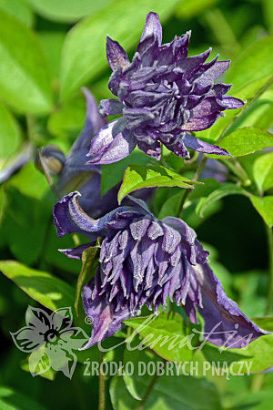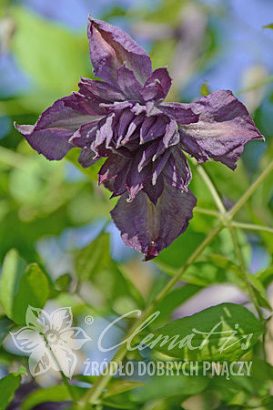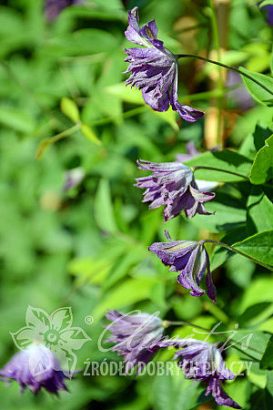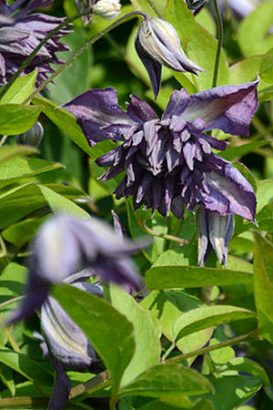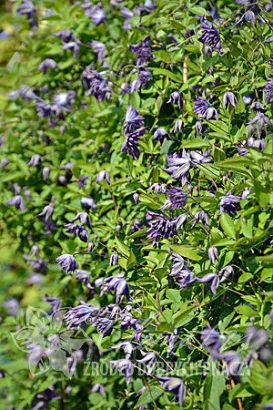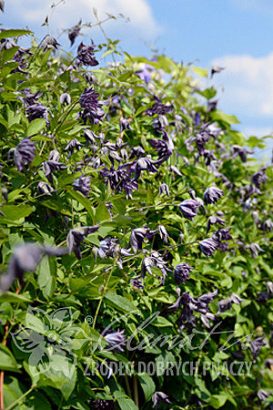Clematis ‘Mary Rose’, syn. Clematis viticella ‘Flore Pleno’
Clematis 'Mary Rose'| Color of flowers | violet-purple with grey hue, full |
|---|---|
| Plants height | 2 m |
| Flowers size | small |
| Flowering month | VI, VII, VIII, IX |
| Aspect | S, E, W |
| Pruning way | 3 (hard) |
| Frost hardiness | Zones 4 - 9 |
The oldest of known Clematis cultivars of charming, fully double flowers, violet-purple with grey hue. It has a retro look, suitable for historical gardens. Recommended for container cultivation.
WHAT IT LOOKS LIKE: Flowers small, 3–6 cm across, double, consisting of many curling and rosaceous sepals, violet-purple with grey hue; blooms between June and September.
HOW IT GROWS: A climber supporting itself with leaf tendrils. Reaches 2–2 .5m height.
WHERE TO PLANT: Prefers well-drained but not droughty soil and sunny sites. Frost hardy (zone 4–9).
HOW TO PLANT AND MAINTAIN: Before planting immerse the plant container in water for 10-30 min. Place the plant in a 60 x 60 x 60 cm hole with a 10-cm layer of pebbles and gravel at the bottom. Cover the roots with a bucket of well-rotten manure or compost and fill up with fertile soil. Place the plant base 5–10 cm deeper than it was before. Plant at least 30 cm from walls or other plants. The base should be in a shade. Cover the ground around the new plants with bark mulch and for winter protection pile it up to 10 cm. Fertilize with Osmocote 5-6 M, water generously in vegetative season. Flowers appear on new shoots, so at the end of February or the beginning of March dead wood should be removed and the live shoots strongly pruned – at 30 cm from the base, above the strong buds in the first year, 40 cm in the second year and 50 cm in the following seasons.
HOW TO APPLY: Particularly recommended for growing along arbours, obelisks and other garden supports. It looks lovely interlacing shrubs or other vines. Light background sets off the flowers nicely. Suitable for container cultivation. Perfectly suited for historical gardens.
ORIGIN: Selected in 1623. Re-introduced in the market by Barry Fretwell, Great Britain 1981.
SIMILAR CULTIVARS: ‘Purpurea Plena Elegans’.

